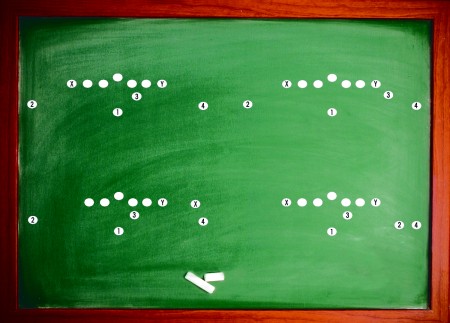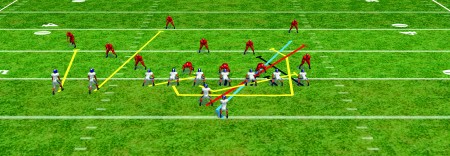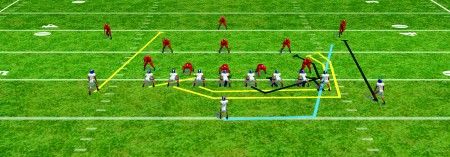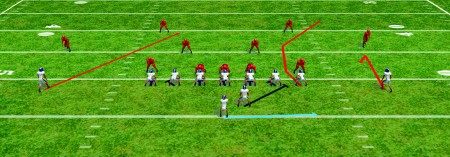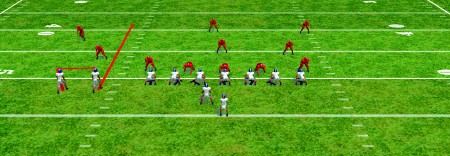Article CategoriesAFM Magazine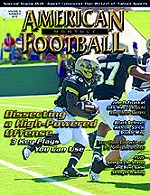
|
Spreading the Double Wingby: James HargittAssistant Coach Mt. Holly (NC) © More from this issue The double wing is an offense that allows undersized personnel to compete with larger opponents. The base package of the offense is very physical and often leads to large amounts of yardage and points when run correctly. We have long been proponents of the Tim Murphy (Clovis, CA) style of double wing football, but as defenses devise a myriad of looks to prevent the double wing from rolling down the field continuously and controlling the clock, we have chosen to add to our package. We have felt that a double wing team needs to have a curveball to throw at defenses so that they do not become too comfortable facing the traditional under-center power game of the double wing. The answer that we have devised is a shotgun version of the double wing. This package includes almost all of the base plays from the double wing but runs them with different formational packages and blocking adjustments to put the defense in conflict, prevent them from becoming comfortable, and provide us with quick strike capabilities. Formations Formations are the key to the spread double wing attack. We utilize an ACE set most of the time. ACE means that we have both wings split the difference between the tackle and the sideline as flankers. The fullback lines up offset right with a Ross call and offsets left with a Lou call two yards behind the guard. The quarterback assumes a balanced stance five yards deep in the backfield (See Diagram 1). We will also move our fullback into a wing position with a Ram or Lion call (See Diagram 2). We also have benefited greatly from unbalancing our tight ends to create an advantage with an over or under call. The over call unbalances a tight end right and under unbalances us left (See Diagram 3). We will also create a great passing set by a Rip or Liz call that will put both wings to one side along with a tight end to facilitate our passing game (See Diagram 4). The Power (See Diagram 5) The base play in any double wing attack is the power play. We tag this play as 24 Power to the right and 43 Power to the left. Player responsibilities are as follows: PSTE: Block down, double anyone over the tackle. If tackle is uncovered, go down to backer. The Counter (See Diagram 6) The counter play allows us to show our opponent power and then change flow. Player responsibilities for 24/43 Counter are as follows: The Sweep (See Diagram 7) Our favorite sweep from the gun is the 28/47 Trojan sweep. This play is very powerful and allows us to be physical with opponents that mistake our gun package for a finesse package. Player responsibilities are as follows: PSTE: Block on the DE. Power Pass (See Diagram 8) PSTE: Corner route. Dropback Passes Conclusion
|
|
| HOME |
MAGAZINE |
SUBSCRIBE | ONLINE COLUMNISTS | COACHING VIDEOS |
Copyright 2024, AmericanFootballMonthly.com
All Rights Reserved


